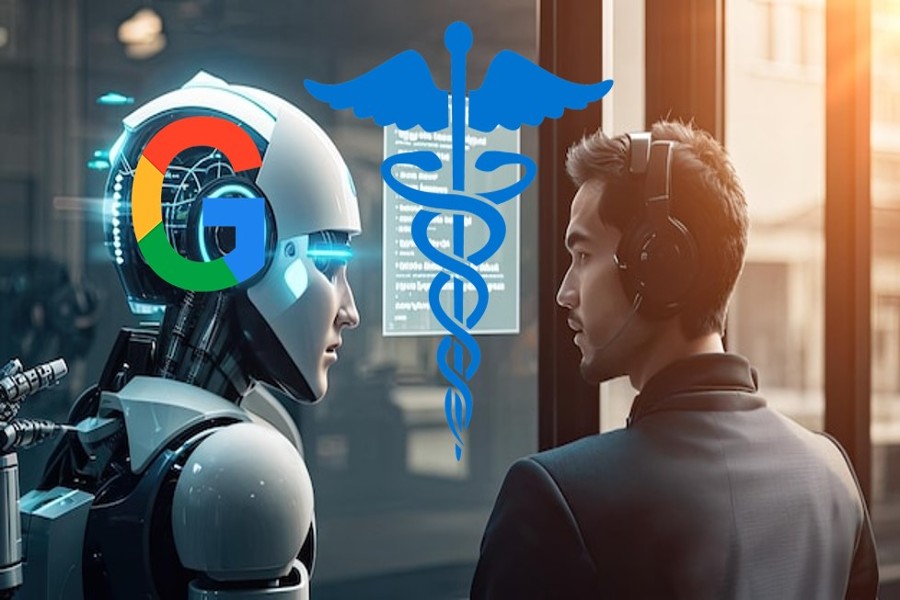Med-PaLM for Healthcare
Multimodal biomedical AI relies on the integration of diverse data sources to gain an overall indulgent of a patient’s health. In the past, medical personnel have made clinical choices based on single-mode data, such as lab test results or medical imaging. For example, a radiologist would usually use a CT scan to detect the existence of a mass while diagnosing a patient with a suspected lung tumor. However, multimodal biomedical AI can offer a more precise diagnosis and individualized treatment plan by combining data from other sources, such as the patient’s medical history, genetic markers, and even lifestyle factors. Healthcare providers may now more accurately diagnose patients and customize interventions according to the unique needs of each patient thanks to this multimodal approach.
Med-PaLM is one of the powerful language model and large-scale generalist biomedical AI system that can understand and generate natural language in the context of medicine. It is a special type of AI designed specifically for the medical field. It operates as a multimodal generative model. Med-PaLM is a specialized language model designed for medical data. Med-PaLM is designed to handle various types of biomedical data, including clinical language, medical imaging, and genomics, all with the same set of model weights. It leverages recent advances in language and multimodal foundation models, allowing for rapid adaptation to different downstream tasks and settings using in-context learning or few-shot fine-tuning. The system is derived from three pretrained models: Pathways Language Model (PaLM), Vision Transformer (ViT), and PaLM-E. Med-PaLM demonstrates impressive capabilities in medical question-answering and handling diverse biomedical tasks, often surpassing prior state-of-the-art results. It has shown remarkable performance on a wide range of tasks within the MultiMedBench benchmark, exhibiting zero-shot generalization to novel medical concepts and tasks. Med-PaLM has been piloted for automating documentation and creating an ambient listening system that transcribes doctor-patient conversations in the emergency room. MedPalm has the potential to be used in clinical settings to assist radiologists in interpreting medical images and generating accurate reports.
Comparison of Palm-2 and Med Palm-2
Palm-2 is Google’s next generation large language model. It is very good at math, at code, advanced reasoning and multi-lingual translation. It is trained on scientific and mathematical data. It has been trained over 100 spoken languages and 20 programming languages.
Med-Palm-2
It is a healthcare focused version of Palm-2. It is a family of models of various sizes and complexities from the one trillion primary Unicorn to the one hundred million primary Gecko. It is also a platform adaptable in different purposes and domains.
Why Med-Palm2 for Healthcare
Google Understood that healthcare needs specialized knowledge not easily captured by general language models and it is an area where AI can hugely improve lives. So for that they have created Med-Palm2, a healthcare focused version of Palm-2. Med-Palm2 is Google’s first Medical AI to rectify the shortcomings of Med-Palm. The shortcomings are it is only trained on English data, struggled with complex medical questions and lacked Ethical and social understanding vital for healthcare. Med-Palm2 is educated on vast, varied medical data from reliable organizations. This AI is homed for specific medical tasks like Diagnosing diseases, Planning treatments, Patient Education and Medical Research. It improves its precision by learning from medical experts feedback. It carry out several languages and working between them taking into account cultural and regional new answers. It is also programmed with ethical values respecting user privacy and supports decision making answers. Up coded from Med-Palm the new version of process is a wider range of medical data performs better on medical tasks, supports more languages and tackle complex medical inquiries.
Features of Med-Palm-2
A standout AI model has several impressive features which takes us to a very next step on our journey to medical Licensure, achieving 84.5% on MEDQA dataset from the USNLE and 72.3% on the international MEDMCQA dataset. This AI exults in summarizing medical documents shifting through large health data, answering complex medical questions clearly and concisely. So, if you ask about any disease symptoms it can easily provide a detailed response. Moreover it is multilingual and culturally adaptable, capable of translating and responding accurately across languages and dialogues.
How Med-palm2 works in Real Life
This is not just a theoretical model that exists in Google’s labs. It is actually being tested and used in real-world settings by real people. Mayo Clinic, one of the prestigious health care institutions in the world. This clinic uses Med-Palm2 to help its doctor’s and staff in their work. For example, finding relevant information from research papers and answering patients query. Helps patients by understanding their conditions, finding reliable sources of health information, and asking questions about their treatments. Google has partnered with various organizations to deploy and evaluate Med-Palm2 in different settings and scenarios. Thus Med-Palm2 boosts the quality of services by supplying accurate medical information by training future healthcare professionals to change healthcare significantly.
Source:
- https://encord.com/blog/med-palm-explained/
- https://cloud.google.com/blog/topics/healthcare-life-sciences/sharing-google-med-palm-2-medical-large-language-model
- https://www.bitsathy.ac.in/blog/potential-of-artificial-intelligence-in-healthcare/

